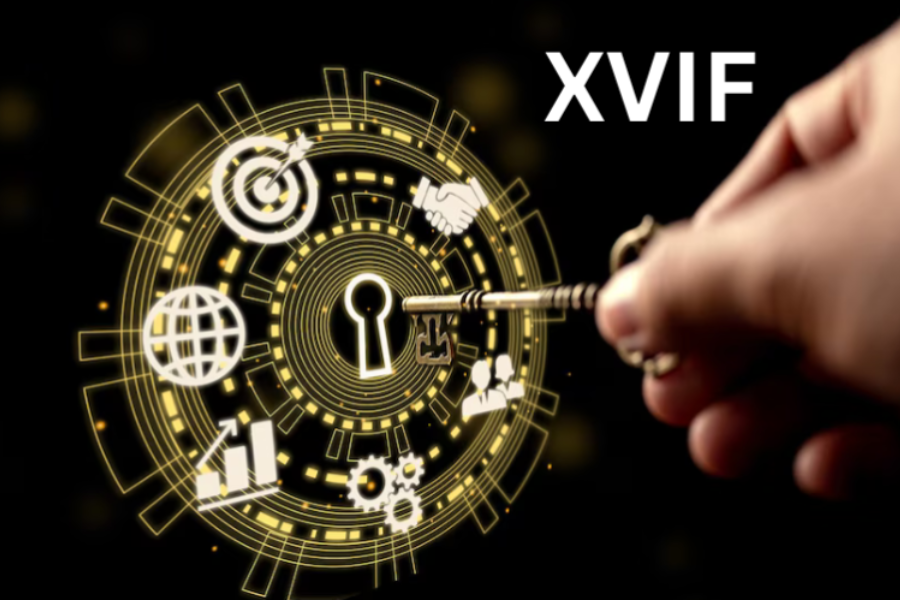Introduction
An innovative idea known as XVIF, or the eXtended Virtual Interface Framework, surfaces in today’s fast-paced digital environment, where seamless interaction and connectivity are critical. This page explores all facets of XVIF, including its history, technical details, uses, advantages, drawbacks, and hopes for the future. As we travel forward, we’ll discover how XVIF is positioned to transform digital communication and networking, influencing the direction of future technological developments.
Exploring the Revolutionary Concept of XVIF
XVIF is an innovative light in a world where digital interfaces are present in every part of our life. It signifies a fundamental transformation in digital communication by providing an adaptable framework for improving connectivity and expediting the transmission of data across many platforms.
Understanding XVIF: An Overview of the eXtended Virtual Interface Framework
The eXtended Virtual Interface Framework, or XVIF, is a complete framework that optimizes data transmission and guarantees safe communication in the digital domain. It is not only a protocol. Its cutting-edge architecture makes it a fundamental component of contemporary digital infrastructure by enabling smooth integration and interoperability.
Tracing the Origins
The journey of XVIF traces back to the early 2000s, driven by the imperative to improve digital interaction within increasingly complex virtual environments. Initially conceived as a simple interface protocol, XVIF evolved over the years, incorporating advanced technologies and methodologies to meet the growing demands of the digital age.
Examining XVIF Framework Technical Specifications and Components
At its core, XVIF comprises a set of technical specifications and components meticulously crafted to optimize data transmission and ensure secure communication. From encryption protocols to data compression algorithms, each component plays a crucial role in the efficacy of XVIF, ensuring seamless integration and interoperability across platforms.
Applications and Advantages
XVIF can be used in a wide range of industries and fields due to its adaptability, providing numerous opportunities for creativity and efficiency. XVIF works with consistent correspondence and association among people and associations, further developing client encounters and expanding efficiency through savvy home mechanization and modern availability
Industrial Integration
By transforming the way disparate systems interact and communicate in industrial settings, XVIF raises operational efficiency and production. By standardized communication protocols, XVIF streamlines data sharing and facilitates interoperability across different components of the industrial ecosystem.
Smart Home Automation
XVIF is a smart home automation solution that gives homeowners easy management over a range of appliances and devices, making household chores more convenient and effective. The way we interact with our living spaces is being transformed by XVIF-enabled products, which give unparalleled control and flexibility in everything from security cameras to smart thermostats.
Benefits of XVIF
Adopting XVIF has many benefits, ranging from increased productivity and communication to enhanced data security. By leveraging XVIF, individuals and businesses may take advantage of fresh opportunities for growth and innovation, empowering them to fearlessly and deftly navigate the difficulties of the digital age.
Challenges and Future Prospects
XVIF is not without difficulties, despite its potential. To guarantee widespread adoption and success, compatibility problems and security concerns must continue to be addressed. But with technology still advancing, there appears to be a bright future for XVIF with more developments and uses to come.
Addressing Compatibility Issues and Security Concerns
Ensuring interoperability with current systems and addressing potential security vulnerabilities are two major obstacles to the deployment of XVIF. These obstacles can be removed by putting strong security procedures in place and encouraging cooperation amongst stakeholders, opening the door for XVIF to be widely used and integrated.
Overcoming Technical Hurdles and Enhancing User Adoption
User reluctance and technical challenges could be barriers to XVIF implementation. Educating users about the benefits of XVIF and providing user-friendly interfaces are essential steps in promoting widespread adoption and acceptance. Additionally, iterative development and continuous improvement of XVIF frameworks can address technical challenges, ensuring seamless integration and optimal performance.
Looking Ahead: Implementing XVIF
As businesses and individuals embrace digital transformation, the role of XVIF will become increasingly prominent. Strategies for integrating XVIF into business operations must prioritize security compliance and address technical requirements to maximize its potential. By adopting a proactive approach to integration and leveraging XVIF’s capabilities, businesses can drive innovation and competitiveness in the digital landscape.
Conclusion: Navigating the Future with XVIF
To sum up, XVIF is a revolutionary development in digital networking and communication. Businesses and individuals can seize new chances for creativity, productivity, and expansion in the digital sphere by adopting XVIF. XVIF is a transformative catalyst that gives us the ability to influence how connectivity and engagement are shaped in the future as we traverse the challenges of the digital age.
FAQs
What does XVIF stand for?
XVIF stands for eXtended Virtual Interface Framework. It is a comprehensive framework designed to optimize data transmission and ensure secure communication in the digital realm.
Is XVIF compatible with all digital platforms?
Indeed, XVIF is made to work with a variety of digital platforms, which allows it to be flexible and adaptable to different technological settings.
How does XVIF enhance data security?
XVIF enhances data security through robust encryption protocols and secure transmission methods. By encrypting data during transmission, XVIF ensures that sensitive information remains protected from unauthorized access.
Can XVIF improve website ranking on search engines?
While XVIF itself does not directly impact website ranking on search engines, its implementation can contribute to improved website performance. By enhancing data security and optimizing digital operations, XVIF indirectly supports factors that influence search engine ranking, such as user experience and website credibility.
What are the potential risks associated with XVIF implementation?
Some potential risks associated with XVIF implementation include security vulnerabilities, compatibility issues with existing systems, and the complexity of integration. Businesses must address these risks through thorough risk assessment, adherence to best practices, and ongoing monitoring and maintenance of XVIF systems.
